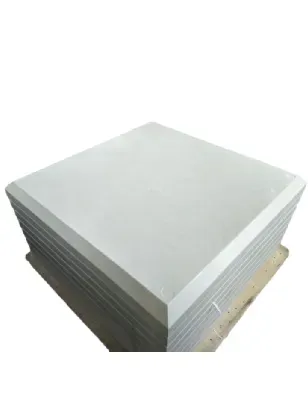loading...
- No. 9, Xingyuan South Street, Dongwaihuan Road, Zaoqiang County, Hengshui, Hebei, China
- admin@zjcomposites.com
- +86 15097380338
- Welcome to visit our website!
Fiberglass Reinforced Plastic Grating Walkways for Durable and Lightweight Outdoor Solutions
The Rise of FRP Grating Walkways A Modern Solution for Durability and Safety
In the world of construction and engineering, materials play a pivotal role in determining the effectiveness, safety, and longevity of various structures. One such innovative material that has gained popularity in recent years is Fiber Reinforced Polymer (FRP). Among its many applications, FRP grating walkways have emerged as a reliable solution for urban and industrial environments. In this article, we explore the advantages, applications, and considerations surrounding FRP grating walkways.
What is FRP Grating?
FRP grating is a composite material made from fibers — usually glass or carbon — embedded in a polymer matrix, which gives it high strength-to-weight ratios, corrosion resistance, and ease of maintenance. These gratings are fabricated in sheets or tiles featuring a lattice structure, allowing for efficient drainage while ensuring safety underfoot. The versatility of FRP materials makes them suitable for various environments, from pedestrian walkways to heavy industrial applications.
Advantages of FRP Grating Walkways
One of the primary benefits of FRP grating walkways is their exceptional durability. Unlike traditional materials such as steel or wood, FRP does not corrode or decay, making it an ideal choice for environments exposed to harsh conditions, such as chemicals, moisture, or extreme weather. This feature significantly reduces maintenance costs and extends the usable life of the walkway.
Safety is another critical consideration, and FRP gratings are designed with anti-slip surfaces, which help prevent accidents in high-traffic areas. The open grid design allows for water and debris drainage, further minimizing slip hazards. Additionally, their lightweight nature simplifies installation and transportation, making them easier to work with on-site.
Moreover, FRP gratings are customizable, available in various colors, sizes, and load capacities to meet specific project requirements. This flexibility makes them ideal for a wide range of applications, from public parks to manufacturing facilities.
frp grating walkway

Applications of FRP Grating Walkways
The versatility of FRP grating walkways allows for their use in numerous sectors. In municipal environments, they can be found in pedestrian walkways, boardwalks, and public parks, enhancing accessibility while providing a safe walking surface.
In industrial settings, these walkways are invaluable in factories, chemical plants, and waste treatment facilities, where resistance to corrosive agents is paramount. FRP grating allows for safe passage over hazardous areas while ensuring easy maintenance access to machinery and systems below.
Marine environments also benefit from FRP gratings, which can withstand the constant exposure to saltwater and other harsh maritime conditions. They are commonly used in docks, piers, and marinas, where traditional materials would quickly deteriorate.
Considerations for Implementation
While the advantages of FRP grating walkways are substantial, a few considerations must be addressed during planning. The initial cost of FRP materials can be higher than traditional options; however, the reduction in maintenance and replacement costs often leads to significant long-term savings. Additionally, engineers and builders should ensure proper installation to maximize the benefits of FRP, as incorrect fitting can lead to issues like instability or premature wear.
Conclusion
FRP grating walkways are undoubtedly a modern solution that combines durability, safety, and versatility, making them a perfect choice for various applications. As industries and municipalities continue to seek innovative ways to enhance infrastructure while minimizing costs, FRP grating stands out as a formidable alternative to traditional materials. By investing in FRP walkways, stakeholders can ensure a safer, more sustainable future for their environments, while also benefiting from the inherent qualities of this advanced material.
-
GRP Structures: The Future of Lightweight, High-Performance EngineeringNewsJun.20,2025
-
FRP Water Tank: High-Performance Storage for Corrosive and Clean Water SystemsNewsJun.20,2025
-
FRP Square Tube: The New Industry Standard for Chemical and Structural ApplicationsNewsJun.20,2025
-
FRP Pultruded Profiles: The Ultimate Choice for Lightweight Structural StrengthNewsJun.20,2025
-
FRP Handrails: The Safer, Smarter, and Stronger Choice for Modern InfrastructureNewsJun.20,2025
-
FRP Grating: The Smart Solution for Durable, Lightweight Industrial FlooringNewsJun.20,2025
-
Why Choose a Galvanized Water Tank for Your Storage NeedsNewsMay.21,2025
